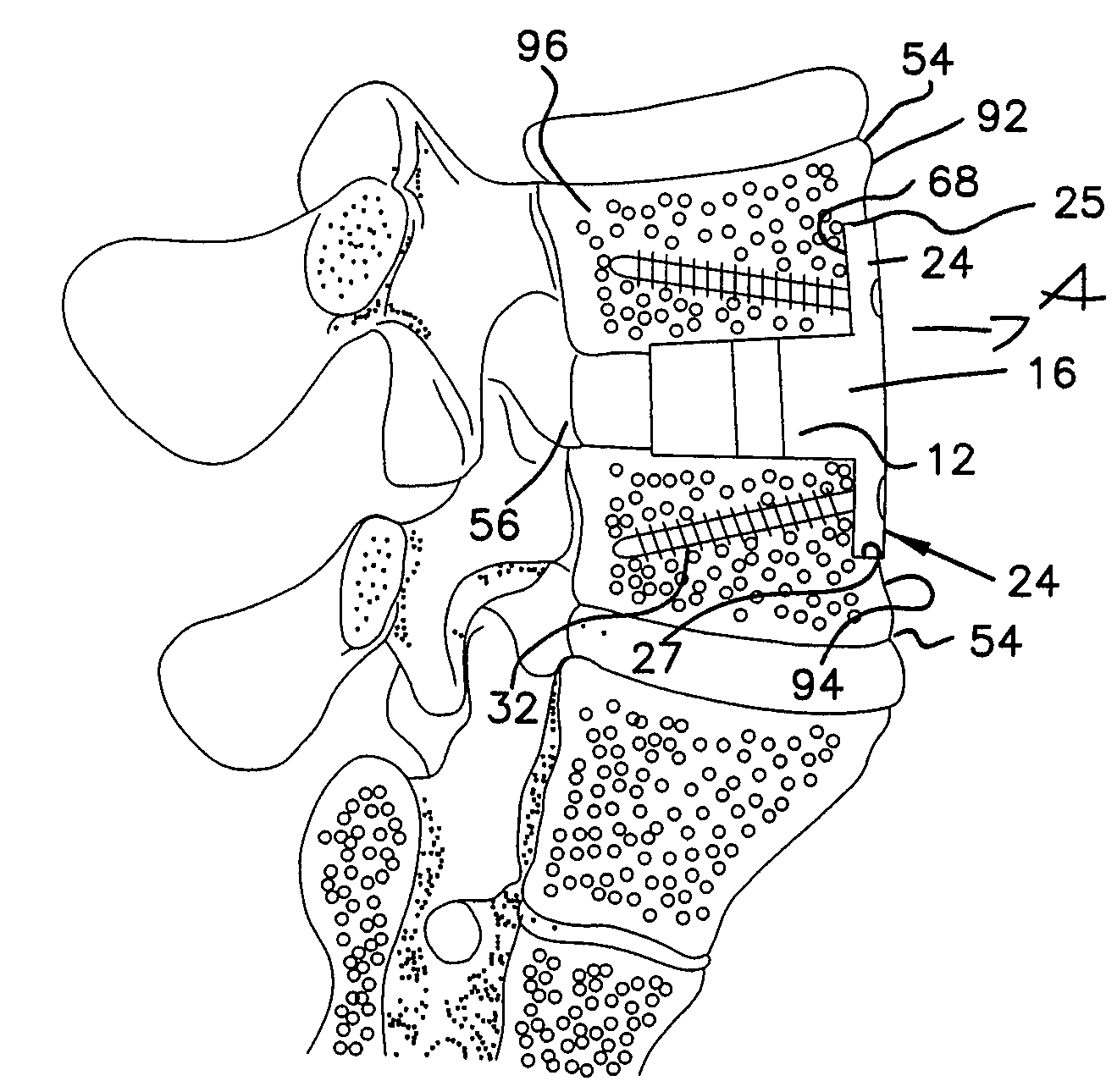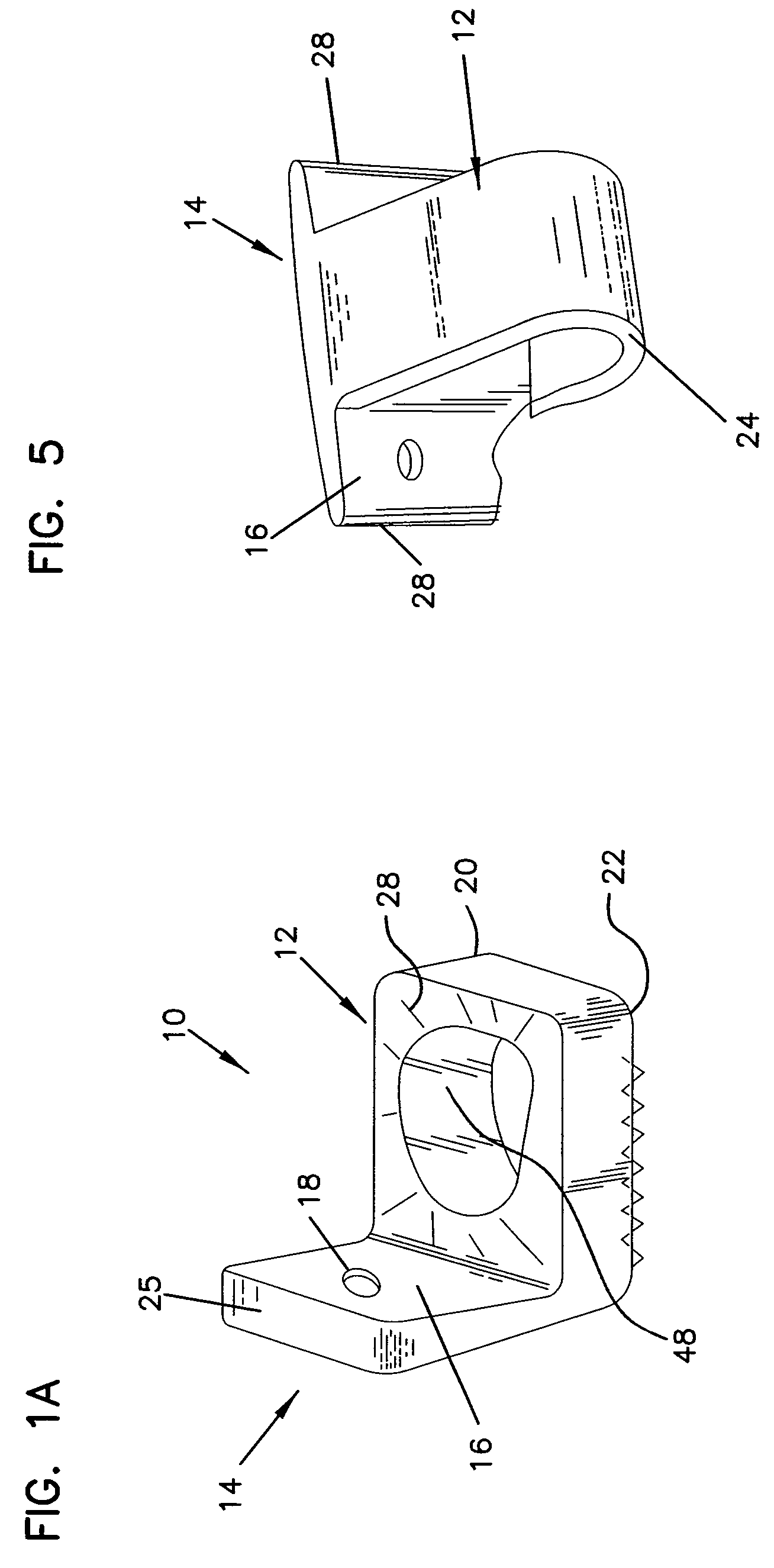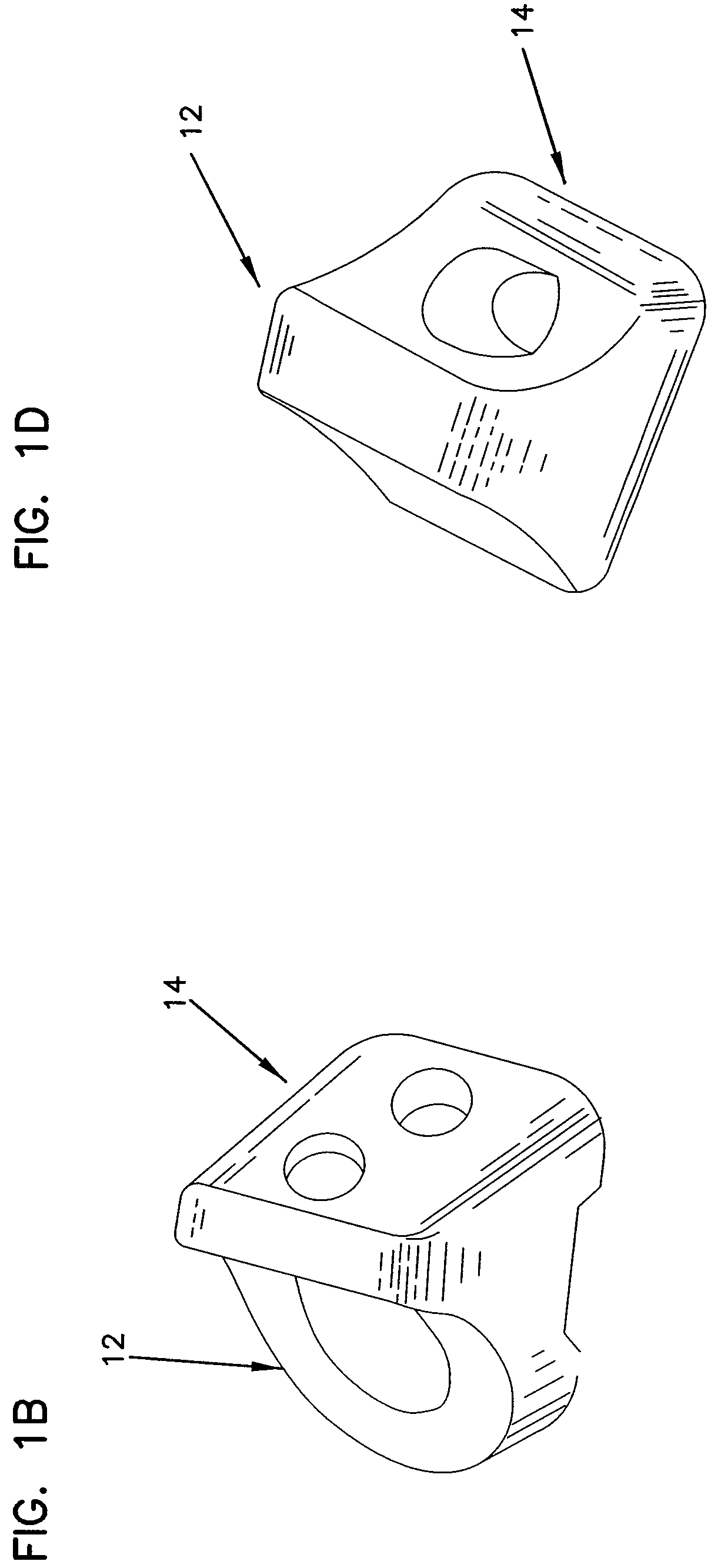Intervertebral implant with movement resistant structure
a technology of intervertebral implants and movement resistance, which is applied in the field of implants, can solve the problems of gradual loosening of fasteners, ineffective structures designed to prevent relative movement between implants and engaged spinal elements, and failure of spinal fusion procedures, etc., and achieves the effects of facilitating fusion, increasing contact area, and enhancing spinal stability
- Summary
- Abstract
- Description
- Claims
- Application Information
AI Technical Summary
Benefits of technology
Problems solved by technology
Method used
Image
Examples
Embodiment Construction
[0061]Preferred embodiments of the presently disclosed intervertebral implant unit with movement resistant structure will now be described in detail with reference to the drawings, in which like reference numerals designate identical or corresponding elements in each of the several views.
[0062]Referring to FIGS. 1A-1D, the inventive monolithic implant unit can have a variety of configurations adapted to provide new bone ingrowth and fusion of human or animal bones by one or more biological mechanisms. These mechanisms include chondrogenesis, osteogenesis, osteoconduction and / or osteoinduction that ultimately leads to complete fusion of the implant to adjoining bone structures. Although the following discussion is mostly concentrated on disclosing anterior and lateral cervical, thoracic, and lumber implants / instrumentation, the inventive concept can be easily adopted to a variety of surgical procedures providing immediate biomechanical stability to various bone structures and / or join...
PUM
| Property | Measurement | Unit |
|---|---|---|
| thick | aaaaa | aaaaa |
| displacement | aaaaa | aaaaa |
| displacement | aaaaa | aaaaa |
Abstract
Description
Claims
Application Information
 Login to View More
Login to View More - R&D
- Intellectual Property
- Life Sciences
- Materials
- Tech Scout
- Unparalleled Data Quality
- Higher Quality Content
- 60% Fewer Hallucinations
Browse by: Latest US Patents, China's latest patents, Technical Efficacy Thesaurus, Application Domain, Technology Topic, Popular Technical Reports.
© 2025 PatSnap. All rights reserved.Legal|Privacy policy|Modern Slavery Act Transparency Statement|Sitemap|About US| Contact US: help@patsnap.com



